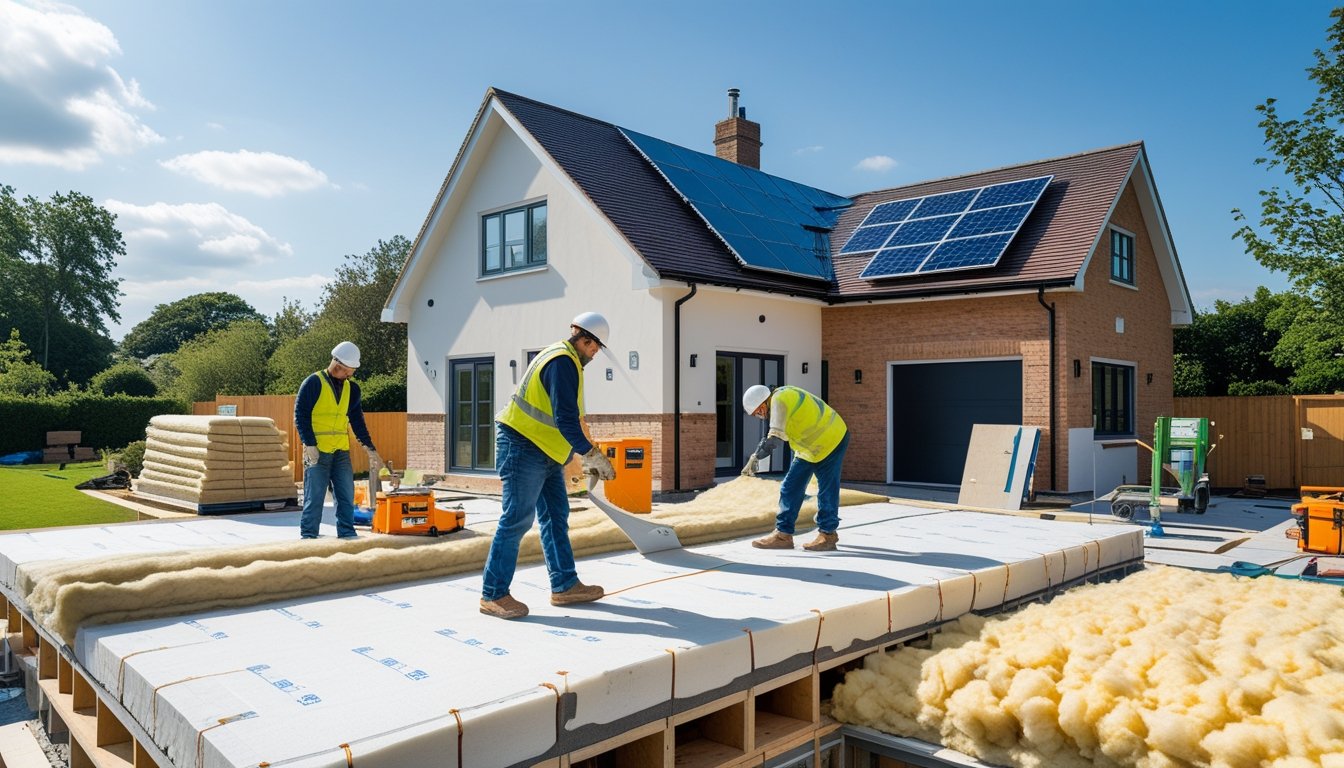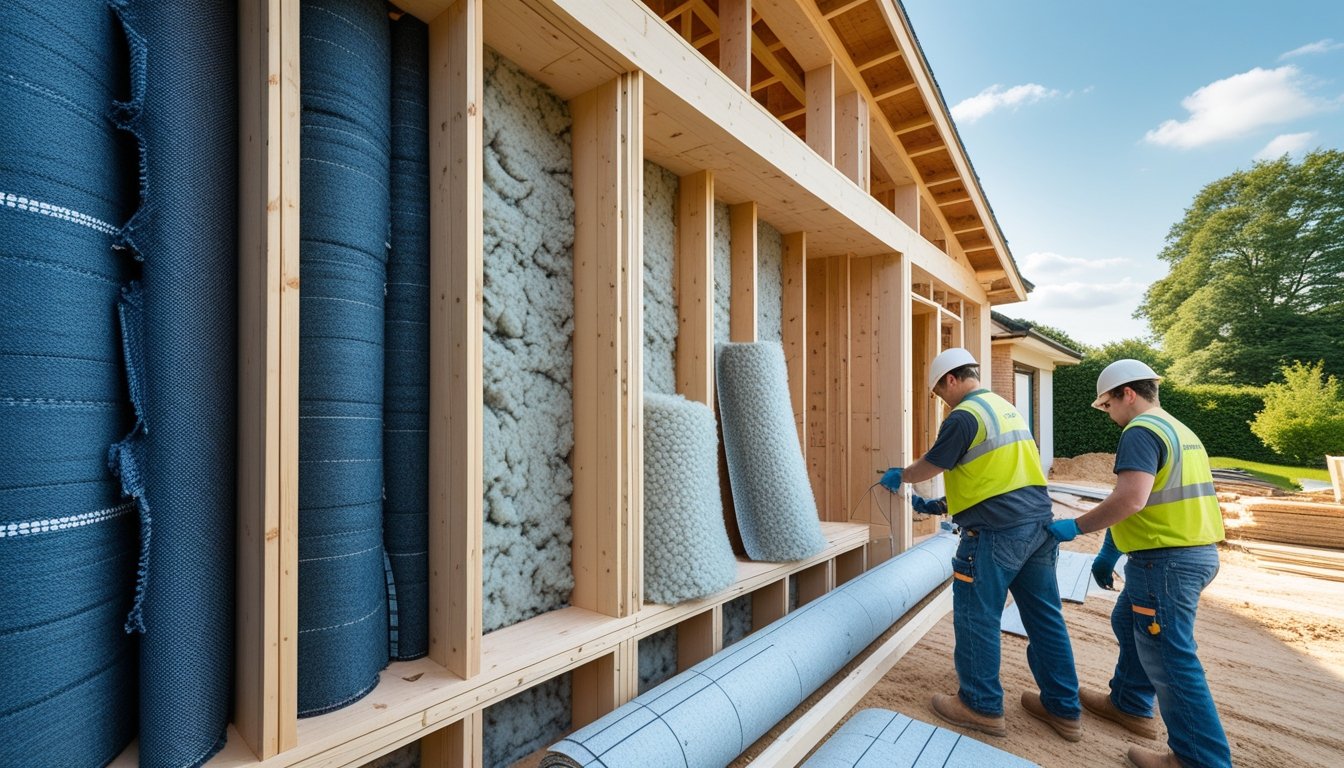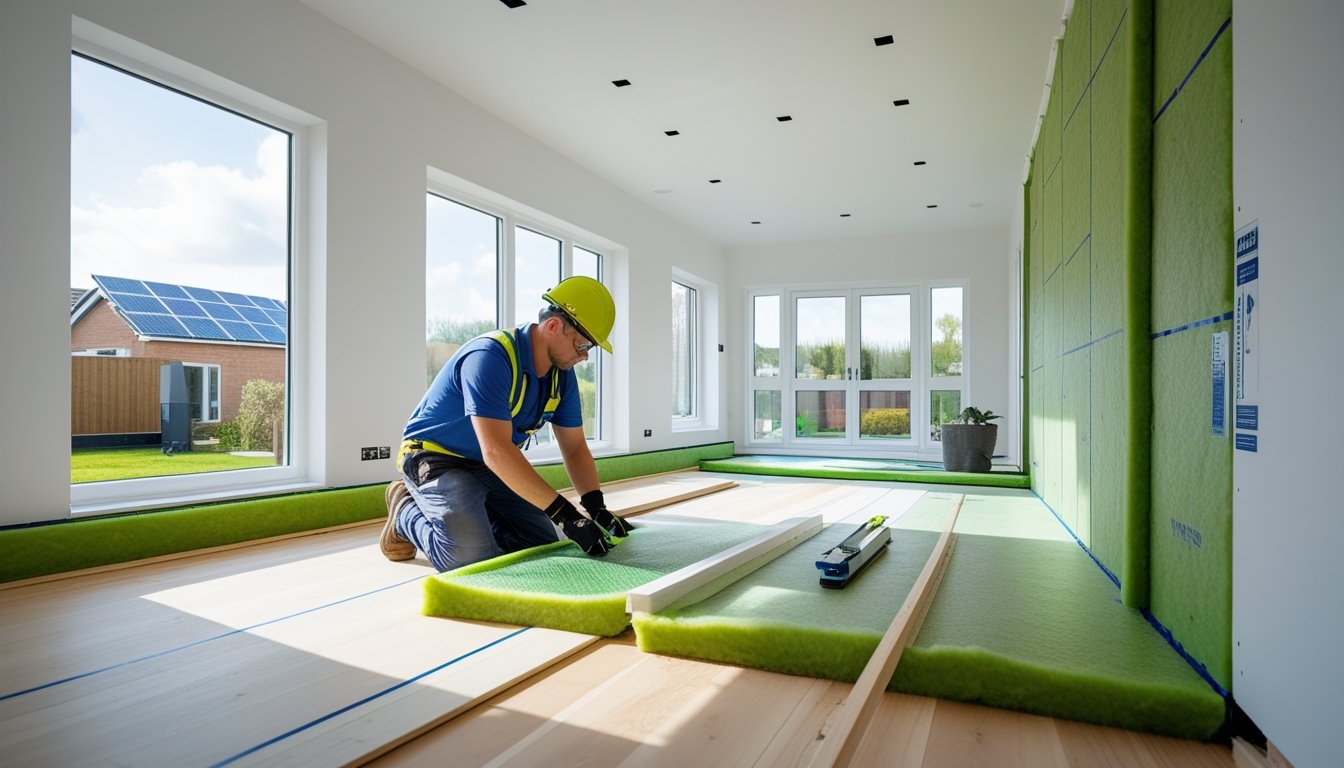Late updated: 26 Sep 2025 12:09
Written by: Eleanor Hartman
Innovative Eco-Friendly Home Insulation Techniques UK: A Comprehensive Guide
The UK is embracing a wave of eco-friendly insulation techniques designed to enhance energy efficiency and minimise environmental impact. By integrating natural materials such as sheep's wool and recycled fibres, sustainable insulation options are making homes both greener and cosier. Our focus is not only on reducing carbon footprints but also on lowering energy costs, which resonates with the rising interest in environmental responsibility.

Today's innovative insulation methods signify a departure from traditional materials, offering fresh possibilities with renewable resources. Interest in materials like hemp and cutting-edge recycled plastic continues to grow, presenting exciting alternatives to conventional insulation. Through these advancements, we aim to inspire homeowners and developers to consider sustainable, cost-effective improvements.
As we explore these techniques, it's evident that the possibilities for eco-friendly insulation are plentiful. The UK's need for sustainable home improvement is more pressing than ever, given the prevalence of solid wall homes that lack energy efficiency. Embracing these new methods allows us to move towards a more sustainable future, proving that practicality and environmental care can seamlessly coexist.
Key Takeaways
- Eco-friendly insulation is critical for reducing energy costs and environmental impact.
- Innovative techniques utilise materials like sheep's wool and recycled fibres.
- Embracing sustainable options supports the UK's shift towards greener living.
Core Principles of Eco-Friendly Home Insulation in the UK
Adopting eco-friendly home insulation in the UK is crucial for achieving significant improvements in energy efficiency and thermal performance. This not only enhances indoor living conditions but also provides long-term environmental and economic benefits.
Impact on Energy Efficiency and Thermal Performance
Eco-friendly insulation is essential for optimising energy efficiency and thermal performance. By using materials such as sheep’s wool, cellulose, and recycled foam, UK homes can retain heat more effectively. This leads to less reliance on heating systems, which in turn reduces energy consumption and lowers utility bills.
Thermal efficiency is measured by R-values, and higher values suggest better insulation. By selecting the appropriate materials that suit specific climate conditions in the UK, we can significantly enhance the thermal performance of homes.
Enhancing Indoor Air Quality and Acoustic Comfort
Eco-friendly insulation materials contribute positively to indoor air quality. These materials are often non-toxic and hypoallergenic, reducing the presence of pollutants and irritants in the home environment. This aspect is crucial for the health and wellbeing of residents, offering a more comfortable living space.
In terms of acoustic insulation, sustainable materials like cork and sheep's wool are excellent choices. They offer substantial noise reduction, creating a serene living environment by lowering the transmission of sound between rooms or from the outside.
Environmental and Economic Benefits for UK Homes
The adoption of eco-friendly insulation practices aligns with broader environmental goals by lowering the carbon footprint of homes. Sustainable insulation materials are often derived from renewable resources, making them a responsible choice for eco-conscious homeowners.
Economically, these materials can offer significant savings. Over time, fewer energy expenses, lower maintenance costs, and potential government incentives make eco-friendly insulation a savvy investment.
For UK homes, focusing on both environmental impact and cost-efficiency assures a sustainable future, while keeping financial concerns manageable. By choosing innovative insulation solutions, we contribute not just to our homes but positively affect the larger goal of a greener planet.
Innovative and Sustainable Insulation Techniques and Materials

Innovative insulation materials and techniques are transforming how we approach home energy efficiency. By focusing on sustainable options, we aim to improve thermal resistance while reducing environmental impact.
Mineral Wool, Sheep's Wool, and Denim Insulation
Mineral wool insulation is popular for its fire-resistant properties and excellent thermal performance. Composed of recycled steel or basalt, it offers soundproofing benefits and is highly durable.
Sheep's wool, a renewable material, is naturally moisture-resistant and can effectively regulate humidity within homes.
Denim insulation, made from recycled cotton, provides an eco-friendly alternative that is non-toxic and easy to handle. These materials not only contribute to reducing carbon footprints but also enhance indoor air quality.
Blown-In and Loose-Fill Solutions
Blown-in insulation, often used for attics, fills gaps and crevices efficiently. This technique utilises fibreglass, cellulose, or mineral wool. Loose-fill insulation is similarly adaptable, offering excellent coverage.
The primary advantage of these methods is their ability to seal small, hard-to-reach areas, ensuring reduced air leaks and improved thermal regulation. With materials often made from recycled sources, these options align with sustainable construction practices.
Advances in Insulation for the Building Envelope
Enhancing the building envelope is essential for optimal energy efficiency. High-performance insulation products such as vacuum-sealed panels and aerogels are making strides in this domain.
Panels of this nature, though more expensive, offer exceptional thermal resistance, while aerogels provide minimal thickness with maximum insulation benefits. Leveraging these materials leads to significant energy savings and aligns with the movement towards sustainable architectures.
Minimising Thermal Bridges in Modern Construction
Thermal bridges occur when gaps in insulation allow heat to escape. Minimising these bridges is crucial for maintaining consistent indoor temperatures. Effective construction methods include utilising continuous insulation systems and advanced framing techniques like staggered studs.
These approaches reduce heat loss and enhance overall energy efficiency. By focusing on detail during construction, we can achieve buildings that not only perform well but also reduce energy consumption, supporting sustainable living with eco-friendly insulation options.
Frequently Asked Questions

Sustainable insulation techniques are becoming increasingly prominent in UK homes due to their environmental benefits and compliance with building regulations. Various materials offer distinct advantages, and understanding these can aid in making informed decisions for both new builds and retrofits.
What are the leading trends in sustainable insulation materials for homes in the UK?
Current trends in sustainable insulation focus on using natural fibres like sheep's wool and hemp, which offer renewable alternatives to conventional materials. Recycled materials such as plastic and denim are also becoming popular. These materials are valued for their low environmental impact and superior insulating properties compared to traditional options.
How do new building regulations impact insulation choices in UK homes?
Recent building regulations in the UK emphasise energy efficiency, significantly influencing insulation decisions. Insulation materials now must meet strict thermal performance standards, spurring innovation in eco-friendly products. Compliance ensures reduced energy consumption and aligns with the UK’s environmental objectives, making it crucial for us to stay informed about these regulations.
What are the most cost-effective green insulation solutions available to UK homeowners?
Cost-effective green insulation solutions often include cellulose-based products and recycled cotton. These materials offer affordable options without compromising on thermal efficiency. Government incentives and grants can further lower costs, making sustainable choices more accessible to homeowners seeking financial and environmental benefits.
Can you retrofit older UK properties with eco-friendly insulation, and what are the considerations?
Retrofitting older properties with eco-friendly insulation is possible and increasingly common. Key considerations include assessing the existing structure and selecting materials that align with the building's characteristics. Added challenges might involve ensuring breathability and mitigating moisture issues, thus ensuring the retrofit adds value without compromising the building’s integrity.
What benefits do homeowners experience with the installation of eco-friendly insulation?
Homeowners installing eco-friendly insulation often notice reduced energy bills due to enhanced thermal efficiency. Beyond cost savings, these materials contribute to a healthier living environment by improving indoor air quality. They also address environmental concerns, aligning with sustainability goals and potentially increasing property value.
How do the thermal properties of eco-friendly insulation materials compare to traditional options?
Eco-friendly insulation materials generally offer competitive or superior thermal properties compared to traditional options. Materials like sheep's wool and cellulose are known for their excellent insulating capabilities, which can match or even exceed those of conventional fibreglass. These alternatives provide effective temperature regulation, enhancing comfort more sustainably.